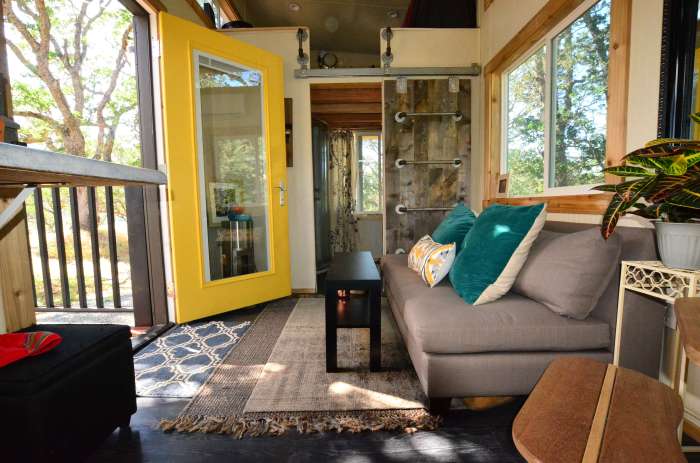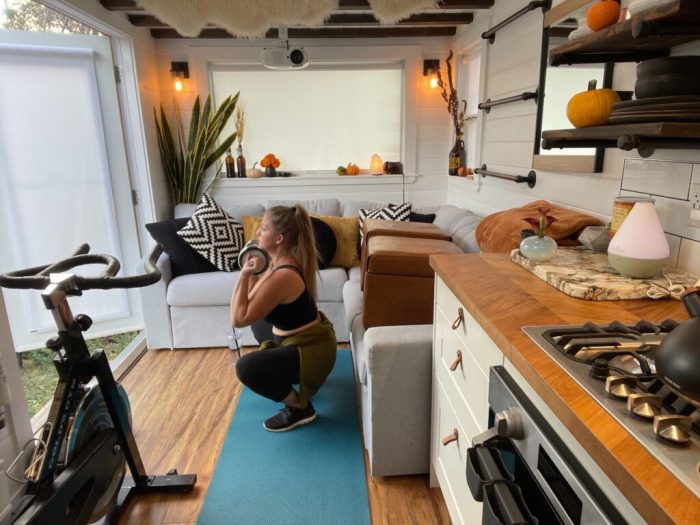Tiny House Lifestyle Tips: Maximizing Space and Sustainable Living

Exploring the world of tiny house lifestyle tips, this article delves into the art of maximizing space and embracing sustainable living practices. From clever storage solutions to eco-friendly designs, discover how to make the most of tiny living.
Introduction to Tiny House Lifestyle
A tiny house lifestyle refers to living in a small, compact dwelling that typically ranges from 100 to 400 square feet in size. This minimalist approach to living focuses on simplicity, sustainability, and efficiency.
Benefits of Adopting a Tiny House Lifestyle
- Financial Freedom: Tiny houses are more affordable to build and maintain, allowing homeowners to save money on utility bills, property taxes, and mortgage payments.
- Simplified Living: With limited space, individuals are encouraged to declutter and prioritize what truly matters, leading to a more organized and stress-free lifestyle.
- Environmental Impact: Tiny houses require fewer resources to build and operate, reducing the overall carbon footprint and promoting sustainability.
Examples of Simplifying Life in a Tiny House
- Multi-functional Furniture: Utilizing space-saving furniture such as Murphy beds, convertible tables, and built-in storage solutions maximizes the use of limited space.
- Outdoor Living: Embracing outdoor spaces for dining, relaxation, and recreation expands the living area and connects residents with nature.
- Minimalist Decor: Opting for a minimalist aesthetic with fewer possessions and simple design elements creates a peaceful and uncluttered living environment.
Environmental Impact of Choosing a Tiny House Lifestyle
By choosing a tiny house lifestyle, individuals can significantly reduce their ecological footprint. The smaller size of tiny houses results in lower energy consumption, less waste production, and a smaller impact on the environment compared to traditional homes.
Designing and Organizing a Tiny House

When it comes to living in a tiny house, maximizing space is key to creating a comfortable and functional living environment. Here are some tips on designing and organizing a tiny house:
Maximizing Space
- Utilize vertical space by installing shelves or storage units that go all the way up to the ceiling.
- Opt for furniture that can be folded or collapsed when not in use to free up floor space.
- Choose light colors for walls and furniture to create a sense of openness and make the space feel larger.
Creative Storage Solutions
- Consider under-bed storage options or built-in drawers to make the most of every inch of space.
- Use multi-functional furniture such as storage ottomans or benches with hidden compartments.
- Install hooks or racks on walls to hang items like pots and pans, utensils, or even bikes to save space.
Multifunctional Furniture
- Look for furniture pieces that serve dual purposes, such as a sofa that can also be used as a bed.
- Invest in a dining table that can be extended or folded down to accommodate different needs.
- Consider a murphy bed that can be folded up into the wall when not in use to create more living space.
Comfortable and Functional Layout
- Plan your layout carefully to ensure that there is enough space to move around comfortably.
- Divide the space into zones for different activities like sleeping, cooking, and relaxing.
- Use rugs or furniture placement to define different areas within the tiny house.
Sustainable Living in a Tiny House

Living sustainably in a tiny house goes hand in hand with the minimalist lifestyle it promotes. From reducing waste to using eco-friendly materials, there are various ways to make your tiny house more sustainable.One of the key aspects of sustainable living in a tiny house is incorporating renewable energy options.
Solar panels are a popular choice for tiny house owners as they can provide clean and efficient energy to power the house. Additionally, using a composting toilet can help reduce water usage and waste production.To further reduce waste and live sustainably in a tiny house, consider implementing a rainwater collection system for water usage, using energy-efficient appliances, and practicing mindful consumption habits.
Repurposing materials for furniture and decor can also add a unique touch to your tiny house while reducing waste
Additionally, incorporating natural light through large windows or skylights can reduce the need for artificial lighting and lower energy consumption.
Renewable Energy Options for Tiny Houses
- Install solar panels to harness clean energy for your tiny house.
- Consider using wind turbines if your location is suitable for wind energy generation.
- Explore options for mini hydroelectric systems if you have access to running water on your property.
Tips for Reducing Waste in a Tiny House
- Set up a composting system for organic waste to create nutrient-rich soil for gardening.
- Use reusable containers and bags for grocery shopping to minimize single-use plastic waste.
- Repair and repurpose items instead of throwing them away to extend their lifespan.
Incorporating Eco-Friendly Materials and Designs
- Choose sustainable materials like bamboo flooring, reclaimed wood, and recycled glass for your tiny house construction.
- Opt for energy-efficient appliances to reduce electricity consumption and lower your carbon footprint.
- Utilize natural ventilation and passive solar design principles to enhance energy efficiency in your tiny house.
Off-Grid Living in a Tiny House

Living off-grid in a tiny house can provide a sense of freedom and self-sufficiency. However, it comes with its own set of challenges and requires careful planning to ensure a comfortable and sustainable lifestyle.
Off-Grid Systems for Tiny Houses
- Solar Power: Installing solar panels can provide a reliable source of energy for your tiny house. Make sure to calculate your energy needs and set up a system that can meet those requirements.
- Rainwater Harvesting: Collecting rainwater can help you manage your water supply efficiently. Invest in a good filtration system to ensure the water is safe for consumption.
- Composting Toilets: Installing a composting toilet can help you deal with waste in an eco-friendly way without the need for a septic system.
Managing Water and Energy Off-Grid in a Tiny House
- Monitor Usage: Be mindful of your water and energy consumption to avoid running out of resources. Implement energy-efficient appliances and fixtures to reduce your usage.
- Conservation: Practice water-saving techniques like taking shorter showers and fixing leaks promptly. Use natural lighting during the day to reduce electricity usage.
- Maintenance: Regularly check your off-grid systems to ensure they are functioning optimally. Clean solar panels and filters to maintain efficiency.
Challenges and Benefits of Off-Grid Living in a Tiny House
- Challenges: Limited access to utilities, potential for system failures, and higher upfront costs for setting up off-grid systems.
- Benefits: Reduced environmental impact, independence from utility companies, and the opportunity to live a more sustainable lifestyle.
Maintaining Self-Sufficiency Off-Grid in a Tiny House
- Gardening: Grow your own food to supplement your diet and reduce reliance on grocery stores.
- Learning Skills: Acquire skills like carpentry, plumbing, and basic electrical work to troubleshoot issues on your own.
- Community Support: Build connections with other off-grid tiny house dwellers for support, knowledge sharing, and collective solutions to common challenges.
Final Wrap-Up
In conclusion, tiny house lifestyle tips offer a unique blend of practicality and sustainability. By incorporating these tips into your living space, you can create a harmonious environment that minimizes waste and maximizes comfort. Embrace the tiny house lifestyle today and unlock a world of possibilities!
User Queries
How can I maximize space in a tiny house?
To maximize space in a tiny house, consider using multi-functional furniture, utilizing vertical storage options, and decluttering regularly.
What are some sustainable practices that align with a tiny house lifestyle?
Sustainable practices for tiny house living include composting, using solar energy, reducing water consumption, and choosing eco-friendly materials.
Is it challenging to live off-grid in a tiny house?
Living off-grid in a tiny house comes with challenges such as managing resources efficiently, but it can also offer the benefits of self-sufficiency and reduced environmental impact.

